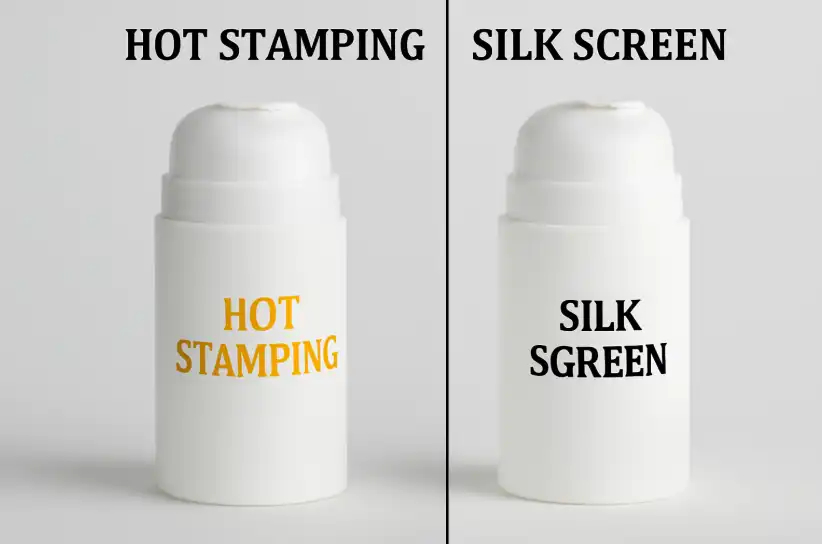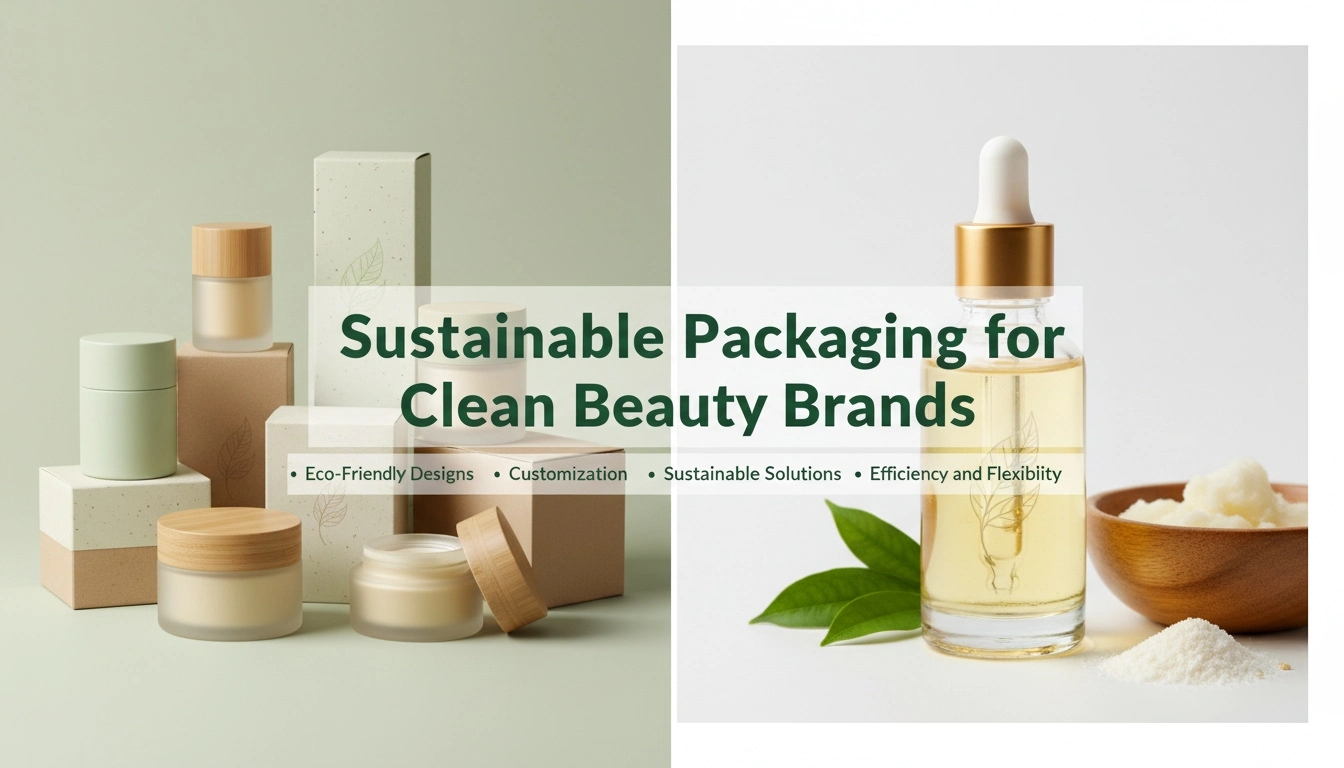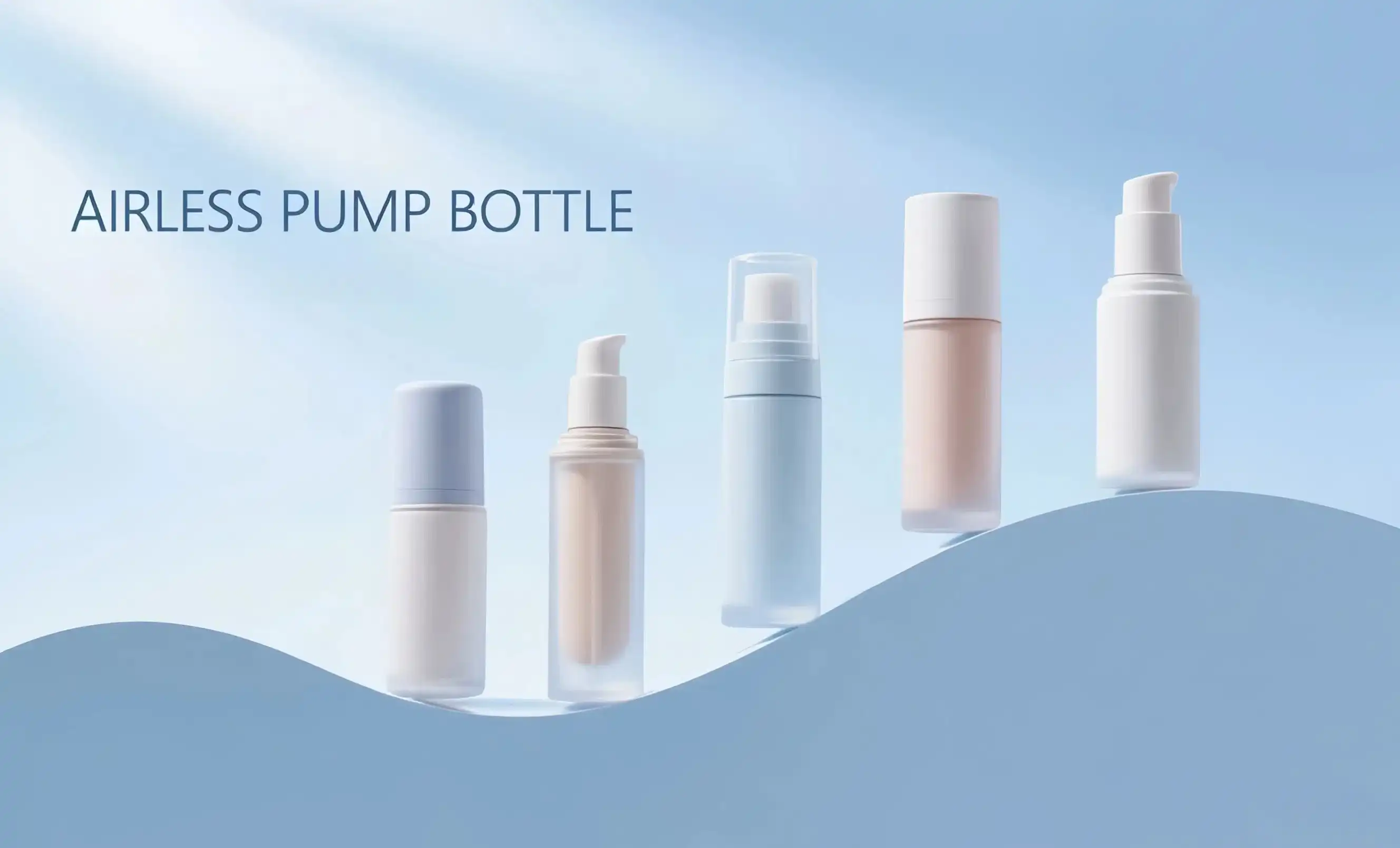Durability Face-Off: Hot Stamping vs. Silk Screen
When comparing the durability of hot stamping and silk screening on curved plastic airless surfaces, several factors come into play. Both methods can produce long-lasting results, but their resilience differs under various conditions.
Topfeelpack's Perspective on Abrasion Resistance
Hot stamping typically offers superior abrasion resistance compared to silk screening. The foil used in hot stamping is bonded to the surface at a molecular level, creating a durable finish that can withstand frequent handling and contact with other surfaces. This makes it an excellent choice for products that may experience regular wear and tear.
Silk screening, while generally durable, may be more susceptible to scratching or peeling over time, especially on curved surfaces where the ink layer might be thinner in certain areas due to the application process.
Chemical Resistance Comparison
In terms of chemical resistance, both methods can be formulated to withstand exposure to various substances. However, hot stamping often edges out silk screening in this aspect. The metallic foils used in hot stamping are inherently resistant to many chemicals, oils, and solvents that might come into contact with the packaging.
Silk screened designs can be made chemical-resistant through the use of specialized inks and protective coatings, but they may require additional treatments to match the innate chemical resistance of hot stamped finishes.

UV and Fading Resistance
When it comes to UV resistance and color fading, both methods can be engineered to perform well. Hot stamped foils often contain UV-resistant properties that help maintain their luster and color over time, even when exposed to sunlight. Silk screened designs can also be formulated with UV-resistant inks, but may require additional protective layers to achieve the same level of fade resistance as hot stamping.
It's worth noting that the curved nature of airless bottle surfaces can affect the longevity of both decorating methods. Areas with high curvature may experience more wear over time, regardless of the technique used. Proper application and quality control are crucial for ensuring the durability of both hot stamping and silk screening on curved plastic surfaces.
Cost Analysis: Which Method is More Economical?
When evaluating the economic aspects of hot stamping versus silk screening for curved plastic airless surfaces, several factors must be considered. The overall cost-effectiveness of each method depends on various elements, including initial setup expenses, production volume, design complexity, and long-term durability.
Initial Setup and Equipment Costs
Hot stamping typically requires a higher initial investment in equipment and tooling. The need for custom dies and specialized hot stamping machines can make the startup costs significant. Silk screening, on the other hand, generally has lower initial setup costs, as the equipment is less specialized and screens are relatively inexpensive to produce.
However, for companies that already have hot stamping equipment in place, the additional cost for curved surface applications may be minimal. Silk screening might require special jigs or fixtures to accommodate curved surfaces, which could add to the initial setup expenses.
Production Speed and Volume Considerations
In terms of production speed, hot stamping often has the edge, especially for simpler designs. Once set up, hot stamping machines can quickly apply designs to large numbers of curved airless bottles. This makes it particularly cost-effective for high-volume production runs.
Silk screening can be more time-consuming, particularly for multi-color designs or when working with highly curved surfaces that require careful positioning. However, for smaller production runs or frequently changing designs, silk screening may offer more flexibility and cost-effectiveness due to its lower setup costs.
Material Costs and Waste Considerations
Material costs can vary significantly between the two methods. Hot stamping foils can be more expensive than silk screening inks, especially for metallic or specialized finishes. However, hot stamping typically produces less waste, as the foil is precisely applied only where needed.
Silk screening may have lower material costs per unit, but it can generate more waste, particularly when dealing with curved surfaces that may require additional ink to ensure proper coverage. This waste factor should be considered in the overall cost analysis.
Long-term cost considerations should also include the durability of each method. While hot stamping may have higher upfront costs, its superior durability on curved surfaces could lead to fewer replacements or touch-ups over time, potentially offering better value in the long run.
Design Limitations: What Each Method Can Achieve
Understanding the design capabilities and limitations of hot stamping and silk screening on curved plastic airless surfaces is crucial for achieving the desired aesthetic outcome. Each method has its strengths and challenges when it comes to realizing complex designs on non-flat surfaces.
Topfeelpack's Insight on Fine Detail Reproduction
Hot stamping excels in reproducing fine details and intricate designs on curved surfaces. The precise application of heat and pressure allows for sharp, crisp lines and small text, even on highly contoured areas of an airless bottle. This makes hot stamping ideal for logos with fine elements, detailed patterns, or small text that needs to remain legible on a curved surface.
Silk screening, while capable of producing detailed designs, may struggle with very fine lines or intricate patterns on curved surfaces. The ink's tendency to spread slightly can result in a loss of sharpness in highly detailed areas, particularly on surfaces with significant curvature.
Color Options and Metallic Finishes
Both methods offer a wide range of color options, but they differ in their approach to metallic finishes. Hot stamping is renowned for its ability to produce brilliant metallic effects, including gold, silver, and holographic finishes. These metallic foils can create stunning visual effects on curved airless bottle surfaces, adding a premium look to the packaging.
Silk screening can achieve a broad spectrum of colors, including metallics, but the metallic effect is generally less pronounced compared to hot stamping. However, silk screening offers more flexibility in color mixing and gradients, allowing for complex multi-color designs that might be challenging to achieve with hot stamping alone.
Coverage and Consistency on Curved Surfaces
Silk screening typically provides better coverage for large areas on curved surfaces. The method allows for consistent ink application across the contours of an airless bottle, resulting in solid, even color coverage. This makes silk screening particularly suitable for designs that require large blocks of color or full-surface coverage on curved plastic containers.
Hot stamping, while excellent for detailed work, can face challenges with large area coverage on highly curved surfaces. Multiple passes may be required to ensure complete coverage, which can lead to inconsistencies or overlapping in the final design. However, for designs that incorporate negative space or require precise placement of elements on a curved surface, hot stamping often provides better control and accuracy.
Ultimately, the choice between hot stamping and silk screening for curved plastic airless surfaces depends on the specific design requirements, the degree of curvature, and the desired visual effect. Many packaging designs leverage the strengths of both methods, combining hot stamped elements with silk screened backgrounds to achieve optimal results.
Conclusion
In the realm of decorating curved plastic airless bottles, both hot stamping and silk screening offer unique advantages. Hot stamping shines in its ability to produce crisp, detailed designs and luxurious metallic finishes, making it ideal for high-end branding on curved surfaces. Its durability and resistance to wear make it a long-lasting option for products that undergo frequent handling.
Silk screening, on the other hand, excels in providing consistent coverage over large areas and offers greater flexibility in color mixing and gradient effects. It's particularly suitable for designs requiring full-surface coverage or complex color patterns on curved airless packaging.
The choice between these two methods ultimately depends on your specific design requirements, production volume, and budget constraints. For brands seeking to make a lasting impression with their packaging, carefully considering the strengths of each technique is crucial.
At Topfeelpack, we understand the importance of choosing the right decoration method for your airless packaging. Our expertise in both hot stamping and silk screening on curved surfaces allows us to guide you towards the best solution for your brand. Whether you're a high-end skincare brand looking for premium finishes, a trendy makeup brand seeking eye-catching designs, or a DTC brand focused on cost-effective yet attractive packaging, we have the knowledge and capabilities to meet your needs.
Ready to elevate your packaging design on curved airless bottles? Contact us at pack@topfeelgroup.com to discuss your project. Our team can provide expert advice on choosing between hot stamping and silk screening, offer custom solutions, and ensure fast delivery within 3-5 weeks. Let's create packaging that not only protects your product but also enhances your brand's visual appeal.
References
- Johnson, M. (2022). Advanced Techniques in Cosmetic Packaging Decoration. Journal of Packaging Technology and Research, 18(3), 245-260.
- Smith, A. & Brown, T. (2021). Comparative Analysis of Hot Stamping and Silk Screening on Curved Surfaces. International Journal of Print Technology, 9(2), 112-128.
- Lee, S. et al. (2023). Durability of Decorative Finishes on Airless Cosmetic Containers. Polymer and Packaging Sciences, 14(4), 332-345.
- Garcia, R. (2022). Cost-Effective Strategies in Beauty Product Packaging. Cosmetic Business Review, 31(2), 78-92.
- Wong, L. & Chen, H. (2021). Innovations in Sustainable Cosmetic Packaging Decoration. Green Packaging Solutions, 7(1), 55-70.
- Taylor, E. (2023). Design Limitations and Possibilities in Curved Surface Printing for Cosmetics. Journal of Aesthetic Packaging, 12(3), 201-215.

 - 副本_1745399213966.webp)

_1747827716538.webp)

